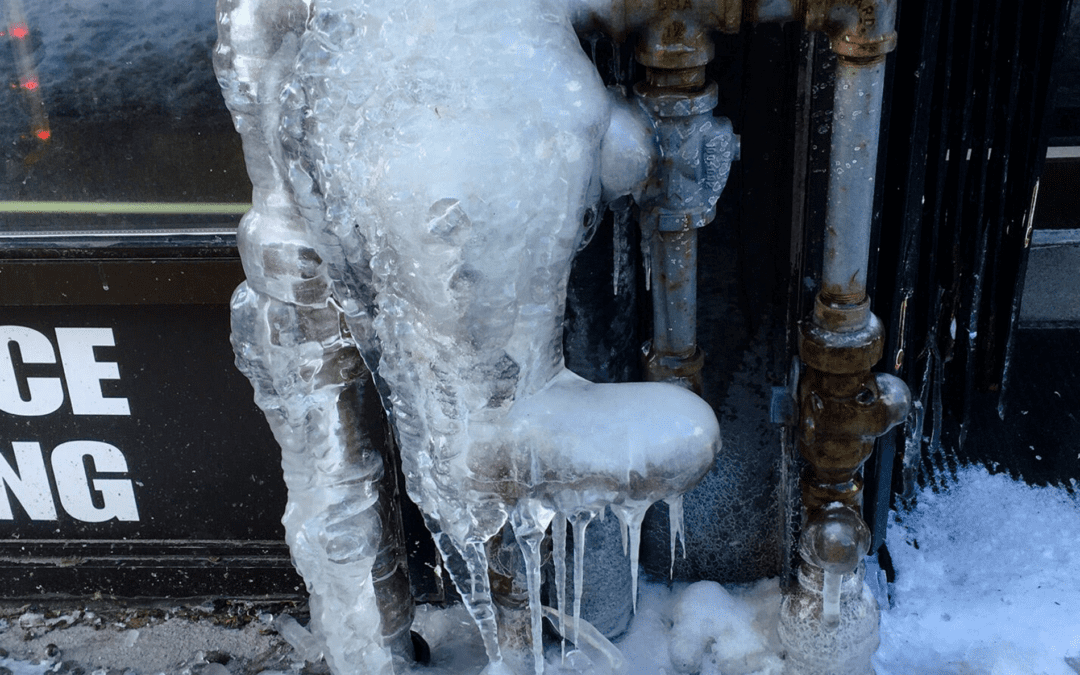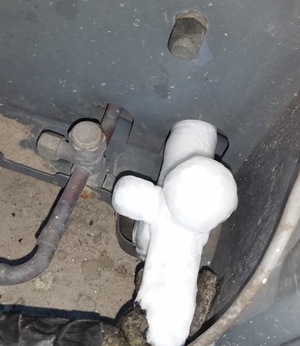Managing a Frozen AC Pipe: Proven Strategies
Managing a Frozen AC Pipe: Proven Strategies
Blog Article
The content below relating to How can I fix an air conditioner’s frozen pipe? is rather compelling. Read on and make your own personal conclusions.

Intro
Uncovering that your air conditioner pipeline is iced up can be worrying, especially throughout warm summertime when you rely on your air conditioning unit the most. Understanding what to do in such a situation is crucial to stop more damages to your air conditioning system and guarantee your convenience inside your home.
Comprehending the Causes
A number of factors can add to the freezing of an air conditioning pipe. Comprehending these causes can help you deal with the issue efficiently.
Lack of Airflow
One usual root cause of a frozen AC pipeline is inadequate air flow. When the airflow over the evaporator coil is restricted, it can cause the coil to go down below freezing temperature, leading to ice development on the pipe.
Low Refrigerant Levels
Insufficient refrigerant degrees in your air conditioner system can likewise cause a frozen pipeline. Low refrigerant degrees can cause the stress in the system to go down, leading to the cold of moisture on the evaporator coil.
Winter Conditions
In chillier climates, freezing temperature levels outside can add to the freezing of AC pipes. If your AC unit is not properly insulated or if there are leaks in the ductwork, chilly air can infiltrate the system, triggering the pipeline to ice up.
Dirty Air Filters
Unclean or clogged air filters can restrict airflow in your AC system, leading to different problems, including a frozen pipe. It's important to replace or clean your air filters frequently to make sure proper air flow and avoid ice buildup.
Indications of a Frozen AC Pipe
Recognizing the indicators of an icy air conditioning pipeline is critical for punctual action.
Reduced Airflow
If you observe a significant decline in airflow from your vents, it might indicate a frozen pipeline.
Ice Buildup on the Pipe
Visible ice accumulation on the refrigerant line or the evaporator coil is a clear sign of a frozen a/c pipeline.
Strange Sounds from the Unit
Uncommon audios, such as hissing or bubbling, coming from your a/c device can signal that there's ice present on the pipe.
Immediate Actions to Take
When confronted with a frozen air conditioning pipe, it's important to act promptly to prevent additional damages to your cooling system.
Shutting off the air conditioning
The primary step is to turn off your air conditioner to prevent the system from running and exacerbating the concern.
Looking for Blockages
Check the location around the indoor unit for any blockages that might be blocking air flow, such as furniture or curtains.
Defrosting the Pipe
You can utilize mild methods like placing towels taken in warm water around the icy pipeline to assist thaw it slowly.
Safety nets
Taking preventive measures can aid prevent future occurrences of an icy air conditioning pipeline.
When DIY Methods Fail
If your attempts to thaw the pipeline or address other problems are unsuccessful, it's time to call in an expert.
Importance of Hiring a Professional HVAC Technician
A certified HVAC professional has the competence and tools essential to detect and repair issues with your AC system securely and efficiently.
Regular Maintenance Checks
Arrange regular upkeep consult a specialist HVAC technician to make sure that your AC system is running effectively.
Transforming Air Filters
Frequently change or cleanse your air filters to prevent air flow constraints and maintain optimal performance.
Protecting Exposed Pipes
If your air conditioner pipes are exposed to chilly temperatures, think about shielding them to stop cold throughout winter months.
Looking For Professional Help
If DIY techniques fail to settle the concern or if you're uncertain about just how to continue, it's best to look for support from a qualified HVAC technician.
Verdict
Handling an icy a/c pipe can be an irritating experience, but recognizing how to react can help decrease damage and recover comfort to your home. By comprehending the reasons, acknowledging the indicators, and taking prompt action, you can properly address the problem and prevent future incidents.
Frozen AC Line: Why It Happens & What To Do About It
A frozen AC line can be a rather peculiar sight in a place like Phoenix, Arizona where nothing ever freezes. In this post, we’ll discuss what makes an air conditioner line frozen – and what you can do about it.
Dirty Air Filters
Did you know that you should be cleaning or replacing your air filters on a monthly basis? Failing to do this can result in airflow issues that, in turn, cause your evaporator coils and lines to freeze over. You’ll notice a buildup of ice on both components, although the buildup on your pipes will, of course, be more evident unless you open your air condition up to reveal the coils.
What To Do About It
Give your air filter a good cleaning if it’s reusable. If not, replace the filter outright. Next, switch your air conditioner’s fan setting on and leave it there for 2-3 hours. This will draw warm air in, helping to thaw your evaporator coil. You can also check out this article for some tips on cleaning the coils themselves if you’d like to speed the process up. Before you switch the unit back to its normal state, make sure the supply vents are completely unobstructed and free of dust or other debris.
If you keep having this issue even after replacing your filters regularly, contact a local HVAC repair company and have them inspect your evaporator coil, ductwork, and any other components that may be at fault. If you live in the Phoenix, Arizona area, give American Home Water and Air a call.
Low Refrigerant Levels/Leakage
What To Do About It
Contrary to what air conditioner “recharge” companies often tell their clients about refrigerant, it should never need to be simply refilled. You see, refrigerant runs in what experts refer to as a “closed loop.” Refrigerant really shouldn’t be leaving that loop. If it is, you’ve got a leak.
Paying someone to come and pump more refrigerant into your system (aka “recharge” it) isn’t the solution. Doing that will simply kick the can down the road. Besides, refrigerant leaks can be harmful to the environment and people in your home.
Rather, you need to take care of the leak with the help of a technician. Check out this article for some more information about dealing with air conditioners that are leaking refrigerant. Before you contact a technician, switch your thermostat to the off position. Then, switch the fan setting on and let it run for 2-3 hours so the unit can thaw.
Improper Temperature Setting
Improper temperature settings can also cause a drop in your air conditioner’s pressure. What many people don’t realize is that air conditioners are actually designed to run when temperatures have fallen above roughly 60 degrees Fahrenheit. If you run the unit when it’s cold outside, you’ll run into many issues, including frozen components.

I was shown that article on What Do I Do If My AC Pipe Is Frozen from a good friend on a different blog. Kindly set aside a second to share this blog post if you enjoyed reading it. Kudos for your time. Kindly stop by our site back soon.
Quote Report this page